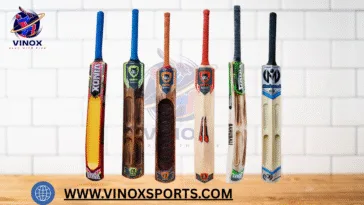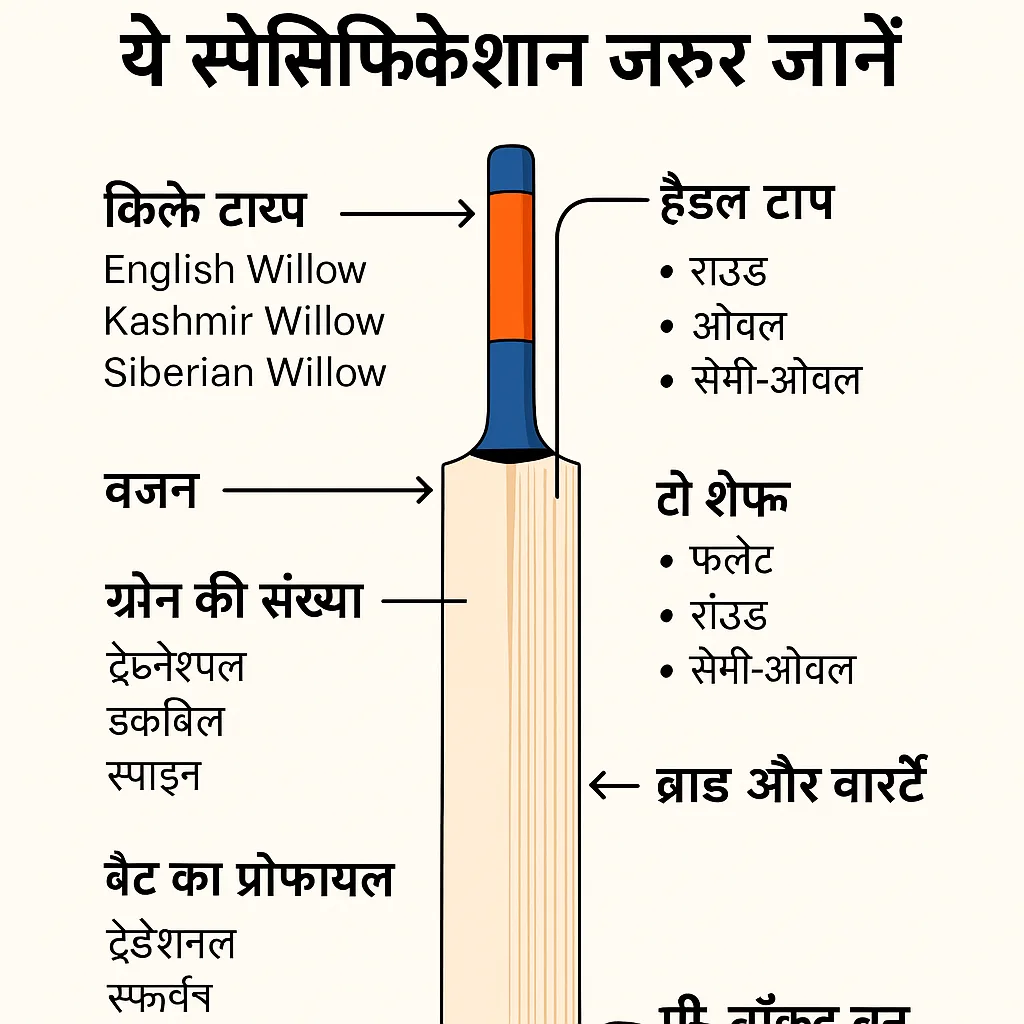Short Handle vs Long Handle Bats: What’s Best for Your Game?
When it comes to choosing the perfect cricket bat, one of the most overlooked yet crucial decisions is the handle type: short handle (SH) or long handle (LH). While the blade of the bat often gets the spotlight for performance, the handle directly affects how a bat feels, swings, and ultimately, how you perform at the crease. In this blog post, we’ll explore the key differences in the short handle vs long handle cricket bats debate, discussing their pros and cons, and how to choose the right one based on your height, playing style, and personal preferences.
Explore our full range of professional cricket bats at Vinox Sports to find the perfect match for your game.
What Is a Short Handle Bat?
A short handle bat is the most commonly used bat size for adult professional and amateur players. It typically has a handle length of about 85-86 cm (33.5 inches) including the blade.
Who is it for?
Ideal for players who are between 5’6” and 6’2” (167 cm – 188 cm) in height.
Popular among top-order batsmen who prefer controlled shots and quick maneuvering.
What Is a Long Handle Bat?
A long handle bat has a slightly longer handle than the short handle, usually around 87-88 cm (34.5 inches). While the blade remains the same size as a short handle bat, the handle gives extra reach and leverage.
Who is it for?
Suited for players taller than 6’2” (188 cm+).
Often used by power-hitters and middle/lower-order players who rely on big shots and leverage.
Key Differences: Short Handle vs Long Handle
| Feature | Short Handle Bat | Long Handle Bat |
|---|---|---|
| Length | Approx. 33.5 inches (85 cm) | Approx. 34.5 inches (88 cm) |
| Ideal for Height | 5’6” to 6’2” | Above 6’2” |
| Balance | Compact and evenly balanced | Slightly top-heavy due to leverage |
| Shot Control | Greater for front-foot and finesse | Powerful but slightly less precise |
| Swing Speed | Faster swing due to shorter length | Slower but more powerful arc |
| Weight Distribution | Even and lighter feel | Heavier toward the blade |
Pros and Cons of Short Handle Bats
✅ Pros:
Better control: Great for timing and placement shots.
Faster bat speed: Ideal for fast hands and quick reactions.
Maneuverability: Easy to guide through gaps or play wristy shots.
❌ Cons:
Limited reach: Might require more footwork for taller players.
Less leverage: Not as powerful for big-hitting strokes.
Pros and Cons of Long Handle Bats
✅ Pros:
Increased reach: Helpful for taller players or when reaching wide deliveries.
More leverage: Great for power shots, lofted drives, and slogging.
Extra bottom-hand power: Helps lower-order batsmen hit big.
❌ Cons:
Less control: Can feel heavier, reducing finesse in shot-making.
Slower swing: Slight delay in pickup, which can be a disadvantage against fast bowling.
Handle Length and Batting Style: What Suits You?
If You’re a Touch Player…
If you rely on timing, placement, and wristwork, a short handle bat is better suited for you. It offers quicker bat movement and better control when playing strokes on the ground.
If You’re a Power Hitter…
If your style involves clearing the boundary, especially in T20 or lower-order hitting, a long handle gives you more swing arc and bottom-hand power, helping to generate greater force behind each stroke.
For Balanced Players…
Players who play both touch and power shots should test both versions, but most go with a short handle for its all-around flexibility and ease of control.
How to Choose the Right Handle Type
Here are a few quick tips:
1. Measure Your Height
Below 5’6”: Consider a small adult or harrow size bat.
5’6” to 6’2”: Stick with a short handle bat.
6’2” and above: Try a long handle or even a long blade if your arms are longer.
2. Test the Pickup
Hold the bat in your regular grip and do a few practice swings. If the bat feels natural and doesn’t strain your wrist or shoulder, it’s the right handle type for you.
3. Check the Balance
Regardless of handle type, a good bat should feel well-balanced, not too blade-heavy or handle-heavy. Some long handle bats may feel top-heavy, which could affect your backlift and timing.
4. Grip Comfort
Some players with larger hands find the long handle more comfortable, while others with smaller palms prefer the snug feel of a short handle.
Myths About Bat Handles
Myth 1: Long Handle = Better Power
Truth: While a long handle does help generate more power due to leverage, it’s not automatic. Without proper timing and technique, the extra handle won’t make much difference.
Myth 2: Short Handle = Only for Pros
Truth: Short handles are used by most cricketers worldwide — amateur and professional alike. It’s not about your level, but about what suits your height and playing style.
Myth 3: Tall Players Must Use Long Handle
Truth: Not always. Some taller players still prefer short handles for their balance and quicker movement. It’s all about comfort.
Final Verdict: Which Is Best?
There’s no one-size-fits-all answer. The best handle type for you depends on:
Your height
Your batting style
Your comfort level and wrist control
Type of format (T20, ODI, Test)
If you’re between 5’6” and 6’2”, a short handle is the default and safest choice.
If you’re above 6’2”, or prefer bottom-hand heavy, power-packed shots, you might benefit from a long handle.
Conclusion
Choosing between a short handle vs long handle cricket bats is more than just a technicality — it’s a decision that can impact your entire game. The right handle affects how well you control the bat, how much power you can generate, and how comfortable you feel at the crease.
Before you buy your next bat, test both handle types if possible. Get a feel for how each bat swings and how your wrists respond. Whether you’re a boundary-smasher or a textbook player, understanding the short handle vs long handle cricket bats difference can give your game a significant edge.
So, next time you step into the cricket store, don’t just look at the brand or the stickers — take a good look at the handle too. It might just be the game-changer you’ve been looking for.





 No products in the cart.
No products in the cart.